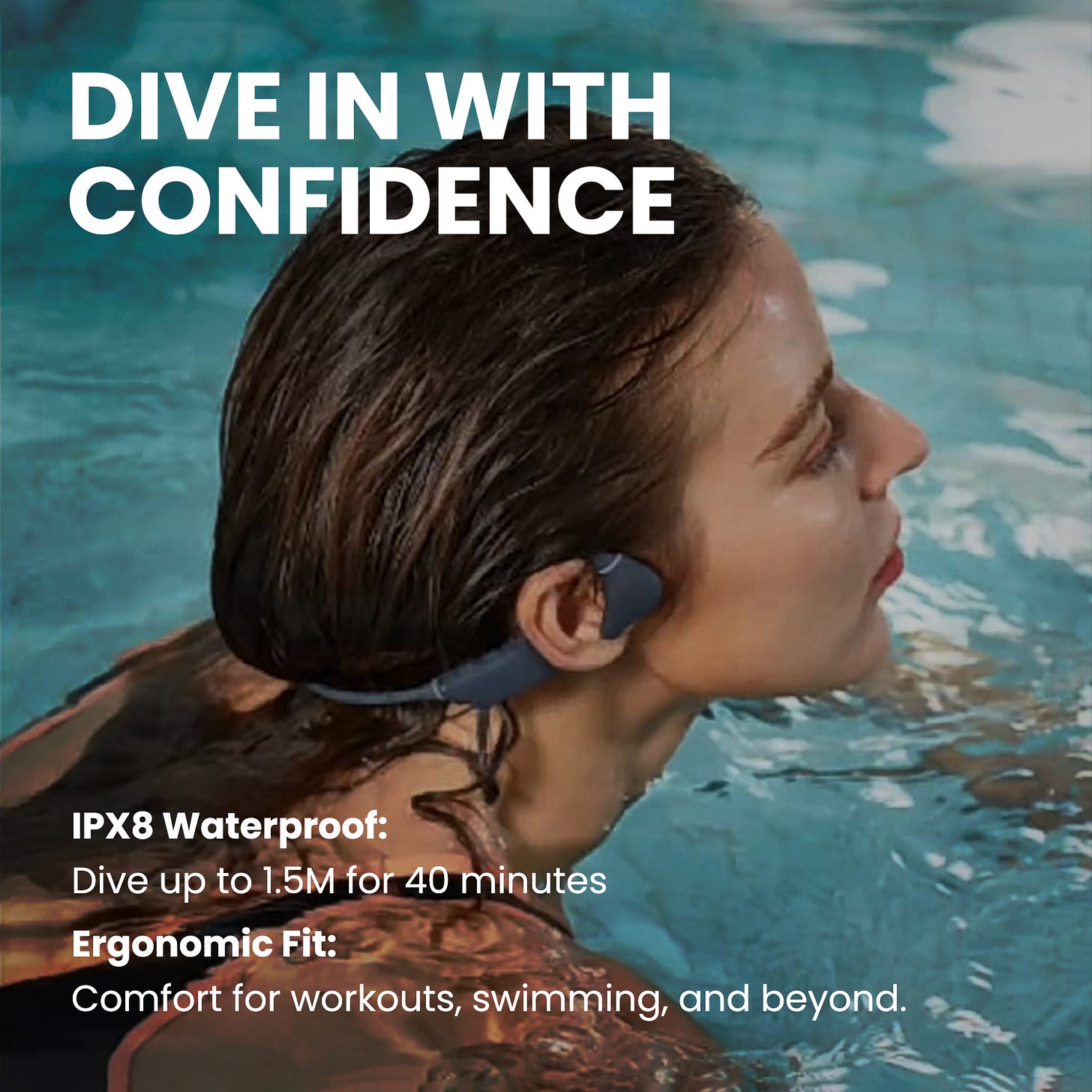Bone Conduction Headphones Explained: How They Work and Why You Should Try Them
With their distinctive open-ear listening experience, bone conduction headphones have completely changed the way we listen to music. In contrast to conventional earbuds or over-ear headphones, these cutting-edge gadgets completely avoid the eardrum by sending sound waves through your cheekbones. Because of this, they are a great option for swimmers, outdoor enthusiasts, and anyone who need to be mindful of their surroundings. This post will discuss the advantages of bone conduction headphones, how they operate, and why they can be the ideal option for your next wireless headphones.
How Do Headphones With Bone Conduction Operate?
Conventional headphones transmit vibrations through the eardrum and into the inner ear via air conduction. Conversely, bone conduction headphones use tiny transducers to transform sound into vibrations that go straight to the inner ear (cochlea) through your skull's bones. They give those with conductive hearing loss an alternate means of experiencing sound because they avoid the eardrum.
Your ears will stay free thanks to our open-ear design, which lets you enjoy calls or music and keep aware of your surroundings. Bone conduction technology guarantees a secure and comfortable listening experience whether you're swimming, working out at a gym, or running on a busy road. Waterproof varieties are also available.
Bone Conduction Headphone Benefits
Compared to conventional audio equipment, bone conduction headphones provide a number of benefits that make them perfect for a range of applications.
1. Open-Ear Safety Design
Bone conduction headphones let you hear emergency sirens, oncoming cars, and pedestrians whether you're an outdoor enthusiast, runner, or cyclist.
Because they enhance situational awareness, open-ear headphones are a safer option for outdoor exercise.
2. Comfort and Durability
Bone conduction headphones are less uncomfortable and cause less ear fatigue than typical true wireless headphones because they don't sit inside your ears.
Because of their lightweight and ergonomic design, they fit snugly whether you're using them every day or for lengthy workouts or commuting.
3. Perfect for Water Activities & Swimming
Many of the types are waterproof earphones for swimming with IP68 protection.
Since they don't need an airtight seal to transmit sound, they are ideal for open-water swimming, lap swimming, and even taking a shower.
4. Ideal for Running and Gym Workouts
Bone conduction earbuds provide a snug, non-slip fit, which is essential for gym training headphones that must remain in place even during vigorous movement.
They are made for high-performance athletes and have a sturdy construction and materials that don't sweat.
5. Compatibility with Hearing Aids
For those with conductive hearing loss or certain medical problems, bone conduction headphones are an excellent substitute because they avoid the eardrum.
6. Wireless Connectivity & Freedom
The majority of bone conduction headphones are compatible with smartphones, smartwatches, and other Bluetooth-enabled devices thanks to wireless Bluetooth earphone technology.
A Selection of the Best Bone Conduction Headphones
Here are a some of the best-rated bone headphones on the market right now if you're thinking about purchasing one:
1. Drip-Fly OZ5
Features of the Drip-Fly OZ5: IP68 waterproof protection for swimming and harsh environments
Long battery life for prolonged use
Wireless headphones with open ears for comfort and safety
Ideal For: Outdoor sports, gym workouts, swimming, and running
2. Shokz OpenRun
Superior sound quality with open-move technology Lightweight and comfortable design
Ideal For: Cyclists and runners that want situational awareness and high-quality audio
3. Shokz OpenMove
Reasonably priced bone conduction headphones with dependable sound quality
Long-lasting and sweat-proof
Ideal For: Novice users and those want to learn more about bone conduction headphones
4. Multi-Sport H2O Audio TRI Pro Headphones
Qualities:
Integrated MP3 player
made for swimming earphones that are waterproof.
Ideal For: Swimmers and triathletes that want waterproof audio
Do Bone Conduction Headphones Have Any Side Effects?
Even while bone conduction technology is usually well-tolerated and safe, certain users could feel a little uncomfortable:
Cheekbone vibrations: Particularly at higher volumes, some users describe a tingling feeling.
Even though outside ear headphones don't fit inside your ears, if the volume is turned up too high, those around you may be able to hear some music.
Less bass response: Bone conduction headphones could have a little less bass response than conventional types.
For the majority of users, particularly those who prioritize comfort, safety, and fitness, the advantages of open-ear headphones exceed the disadvantages, even with these small issues.
The Benefits of Using Bone Conduction Headphones
Bone conduction earphones are a great option if you have an active lifestyle and want headphones that provide comfort, security, and performance.
For cyclists and runners: They make sure you can hear pedestrians and impending cars.
For swimmers: IP68-protected waterproof variants let you listen to music while submerged.
For gym-goers: They provide a snug fit that holds throughout vigorous exercises.
For daily use: The durable earphones provide pain-free wear throughout the day.
You may enjoy the benefits of genuine wireless headphones while keeping your ears open with to cutting-edge devices like the Drip-Fly OZ5.
By offering a more secure and pleasant substitute for conventional earbuds, bone conduction headphones are revolutionizing the way we listen to music. Bone conduction technology provides a flexible option for a range of activities, whether you're searching for running headphones, gym workout headphones, or waterproof swimming earphones.
Are you prepared to enhance your audio experience?
One of the greatest open-ear wireless headphones available right now is the Drip-Fly OZ5.




